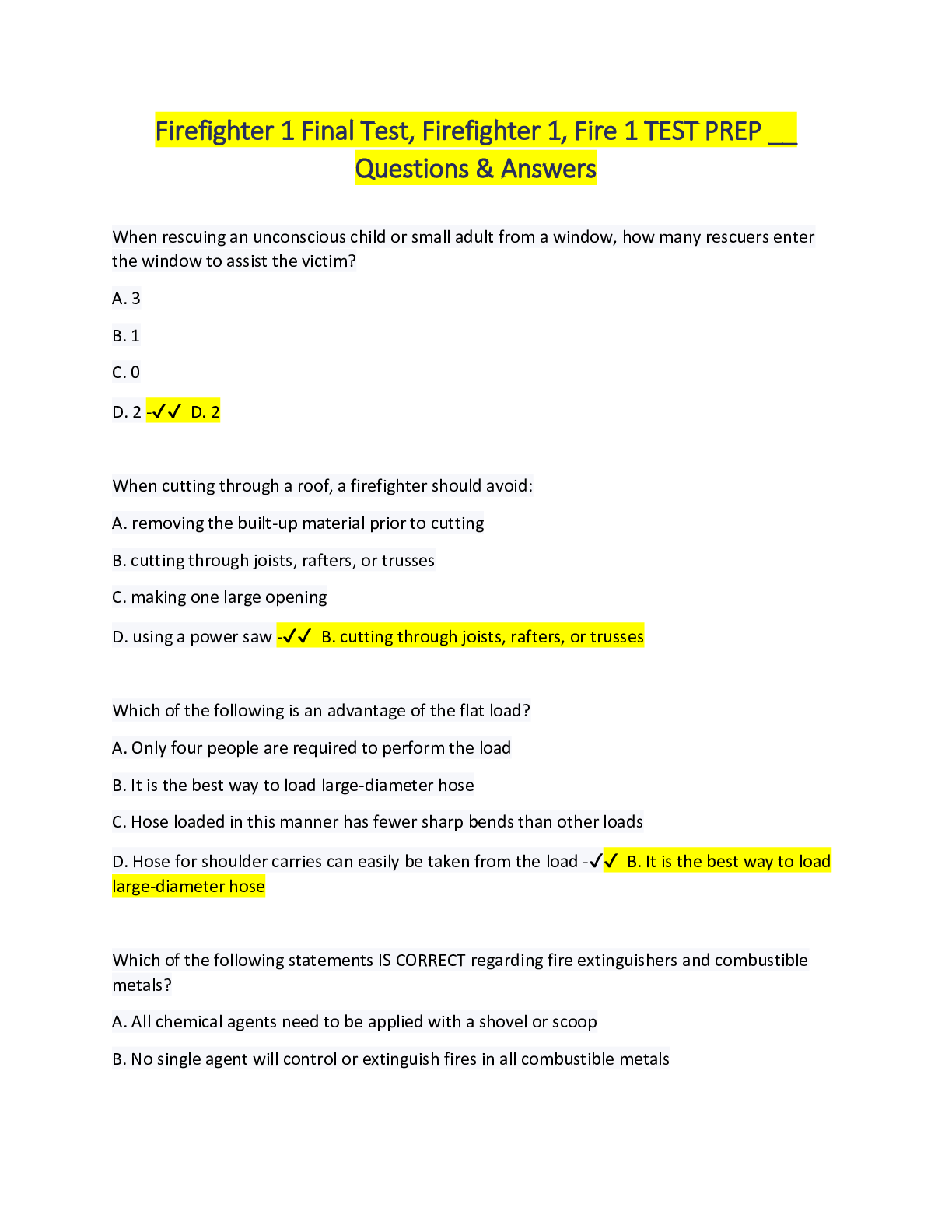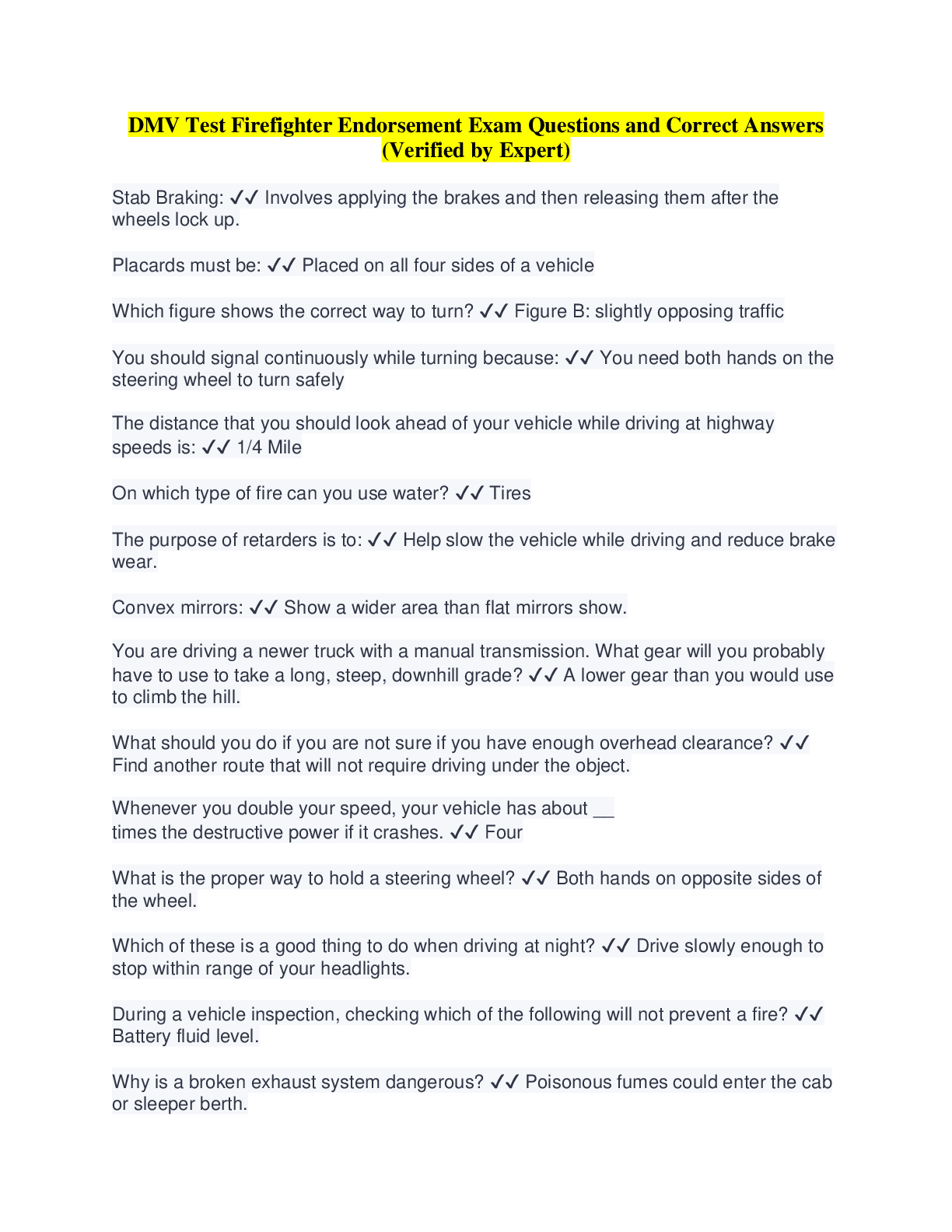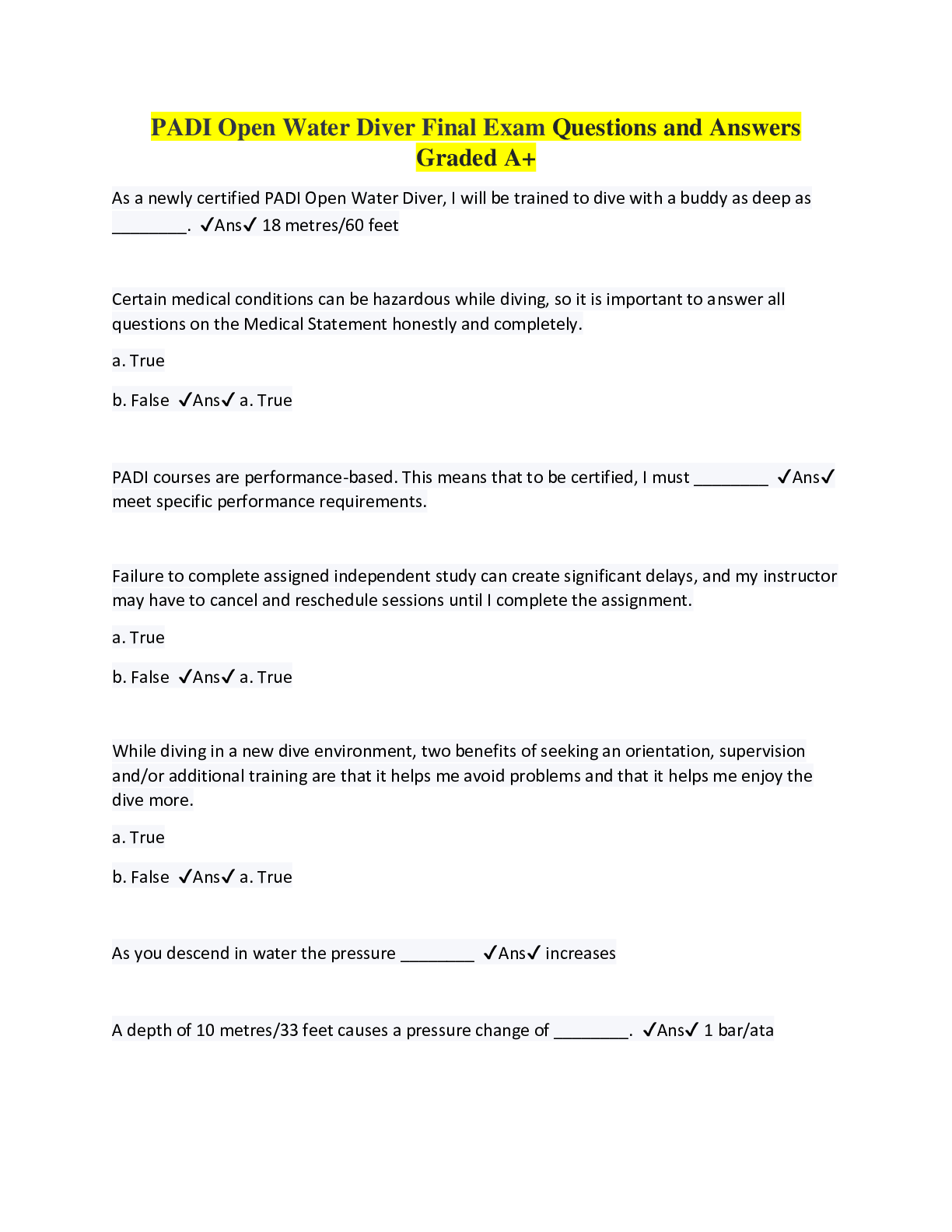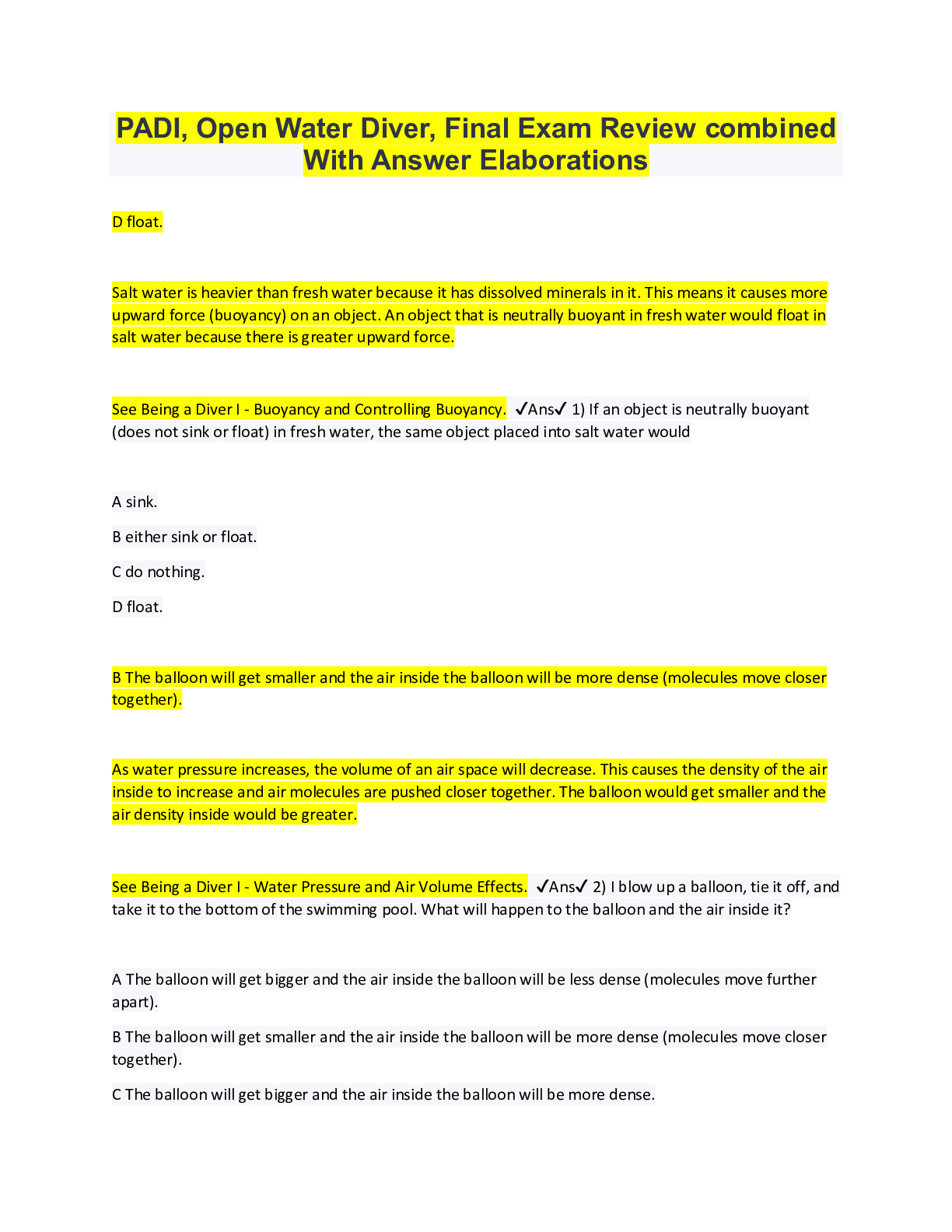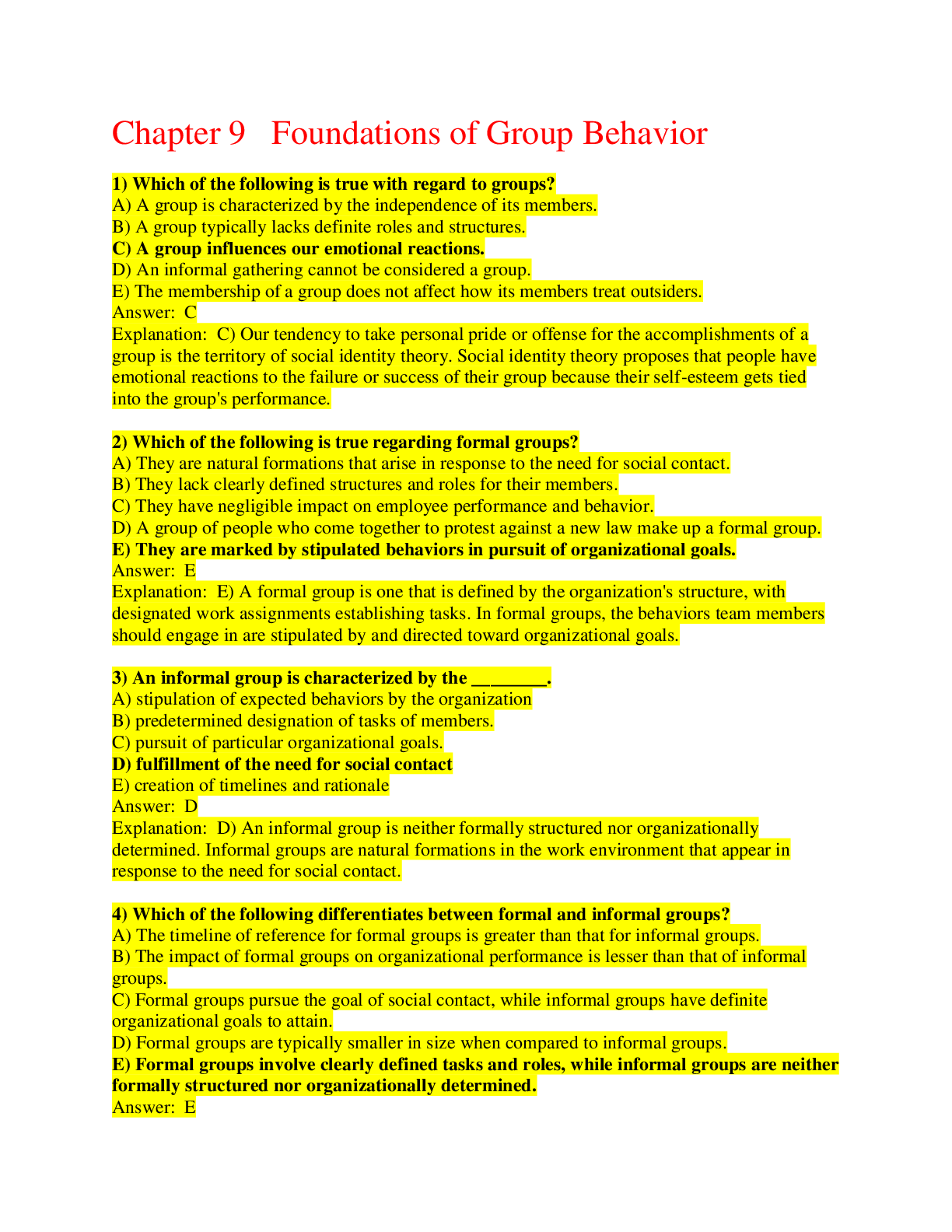*NURSING > QUESTIONS & ANSWERS > MED SURG HESI 2022 QUESTIONS AND CORRECT ANSWERS GRADED A+ (All)
MED SURG HESI 2022 QUESTIONS AND CORRECT ANSWERS GRADED A+
Document Content and Description Below
MED SURG HESI 2022 QUESTIONS AND CORRECT ANSWERS GRADED A+ The nurse is preparing to assist a client with a cuffed tracheostomy tube to eat. What intervention is the priority before the client is per... mitted to drink or eat? ✔Ans✔ Inflate the cuff Rationale: If a client with a tracheostomy is allowed to eat and the tracheostomy has a cuff, the nurse should inflate the cuff to prevent aspiration of food or fluids. The cuff would not be deflated because of the risk of aspiration. The nurse has implemented a bowel maintenance program for an unconscious client. The nurse would evaluate the plan as best meeting the needs of the client if which method was successful in stimulating a bowel movement? ✔Ans✔ Glycerin suppository Rationale: The least amount of invasiveness needed to produce a bowel movement is best. Use of glycerin suppositories is the least invasive method and usually stimulates bowel evacuation within a half-hour. A client is readmitted to the hospital with dehydration after surgery for creation of an ileostomy. The nurse assesses that the client has lost 3 lb of weight, has poor skin turgor, and has concentrated urine. The nurse interprets the client's clinical picture as correlating most closely with recent intake of which medication, which is contraindicated for the ileostomy client? ✔Ans✔ Biscodyl Rationale: The client with an ileostomy is prone to dehydration because of the location of the ostomy in the gastrointestinal tract and should not take laxatives The client is complaining of skin irritation from the edges of a cast applied the previous day. Which action should the nurse take? ✔Ans✔ The nurse petals the edges of the cast with tape Rationale: minimize skin irritation. The nurse is taking a health history for a client with hyperparathyroidism. Which question would elicit information about this client's condition? ✔Ans✔ "Are you experiencing pain in your joints?" Rationale: Hyperparathyroidism is associated with over secretion of parathyroid hormone (PTH), which causes excessive osteoblast growth and activity within the bones. When bone reabsorption is increased, calcium is released from the bones into the blood, causing hypercalcemia. The bones suffer demineralization as a result of calcium loss, leading to bone and joint pain A client with type 2 diabetes mellitus has a blood glucose level greater than 600 mg/dL (34.3 mmol/L) and is complaining of polydipsia, polyuria, weight loss, and weakness. The nurse reviews the health care provider's documentation and expects to note which diagnosis? ✔Ans✔ Hyperosmolar hyperglycemic syndrome (HHS) Rationale: HHS is seen primarily in clients with type 2 diabetes mellitus, who experience a relative deficiency of insulin. The onset of signs and symptoms may be gradual. Manifestations may include polyuria, polydipsia, dehydration, mental status alterations, weight loss, and weakness. The nurse is developing a plan of care for a client who will be admitted to the hospital with a diagnosis of deep vein thrombosis (DVT) of the right leg. The nurse develops the plan, expecting that the health care provider (HCP) will most likely prescribe which option? ✔Ans✔ Maintain activity level as prescribed. Rationale: Standard management for the client with DVT includes maintaining the activity level as prescribed by the health care provider; limb elevation; relief of discomfort with warm, moist heat; and analgesics as needed. Recent research is showing that ambulation, as previously thought, does not cause pulmonary embolism and does not cause the existing DVT to worsen. Therefore, the nurse should maintain the prescribed activity level, which could be bed rest or ambulation. A client has had surgery to repair a fractured left hip. When repositioning the client from side to side in the bed, what should the nurse plan to use as the most important item for this maneuver? ✔Ans✔ Abductor splint Rationale: After surgery to repair a fractured hip, an abductor splint is used to maintain the affected extremity in good alignment. A bed pillow and an overhead trapeze also are used, but neither is the priority item to be used in repositioning the client from side to side The nurse is preparing to care for a client who had a supratentorial craniotomy. The nurse should plan to place the client in which position ? ✔Ans✔ Semi Fowler's Rationale: Supratentorial craniotomy means the exposure of any part of a cerebral hemisphere over the basal line joining the nasion to the inion. A client with an external arteriovenous shunt in place for hemodialysis is at risk for bleeding. Which is the priority nursing intervention? ✔Ans✔ Ensure that small clamps are attached to the arteriovenous shunt dressing. Rationale: An external arteriovenous shunt is a less common form of access site but carries a risk for bleeding when it is used because 2 ends of an external cannula are tunneled subcutaneously into an artery and a vein, and the ends of the cannula are [Show More]
Last updated: 2 years ago
Preview 1 out of 16 pages

Buy this document to get the full access instantly
Instant Download Access after purchase
Buy NowInstant download
We Accept:

Reviews( 0 )
$10.00
Can't find what you want? Try our AI powered Search
Document information
Connected school, study & course
About the document
Uploaded On
Feb 16, 2023
Number of pages
16
Written in
Additional information
This document has been written for:
Uploaded
Feb 16, 2023
Downloads
0
Views
133
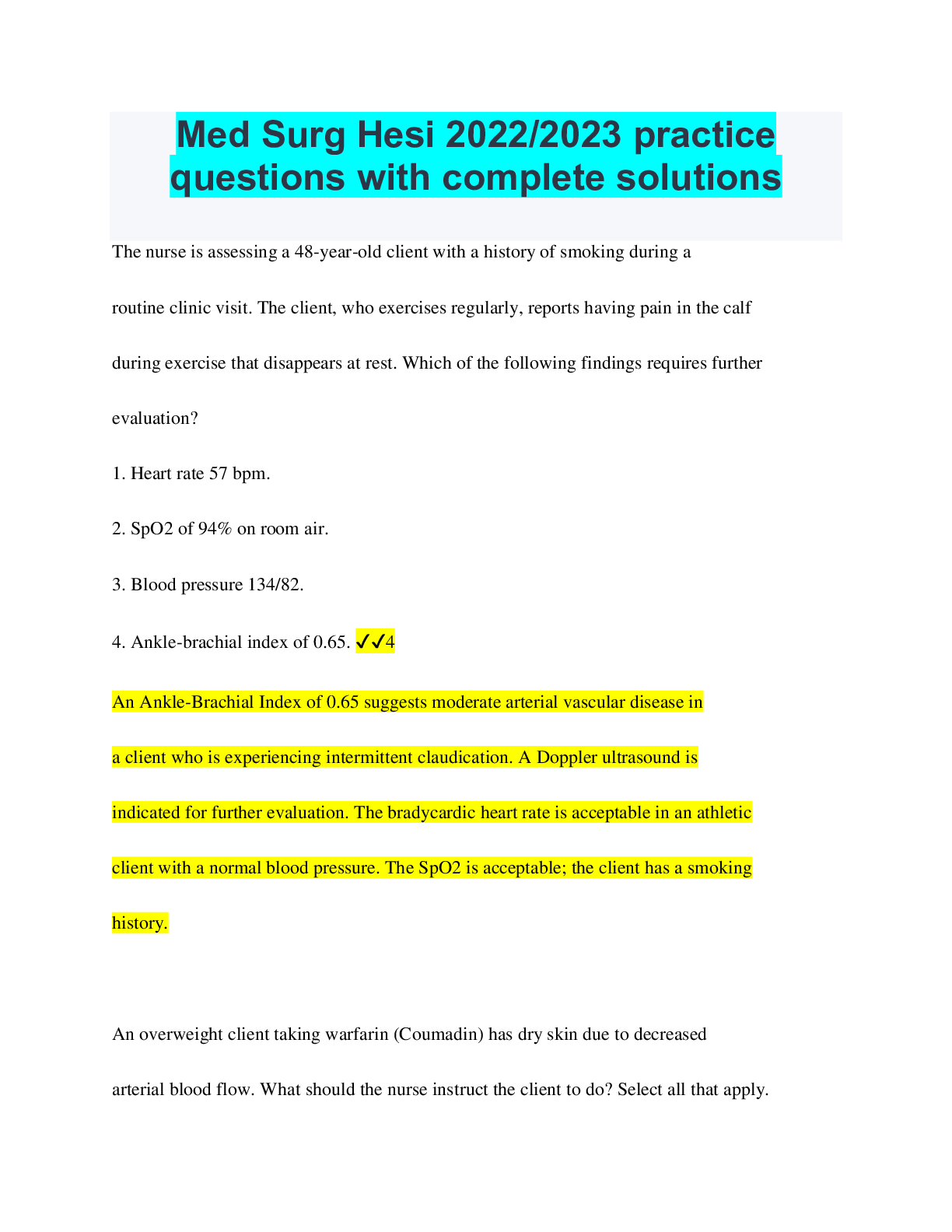


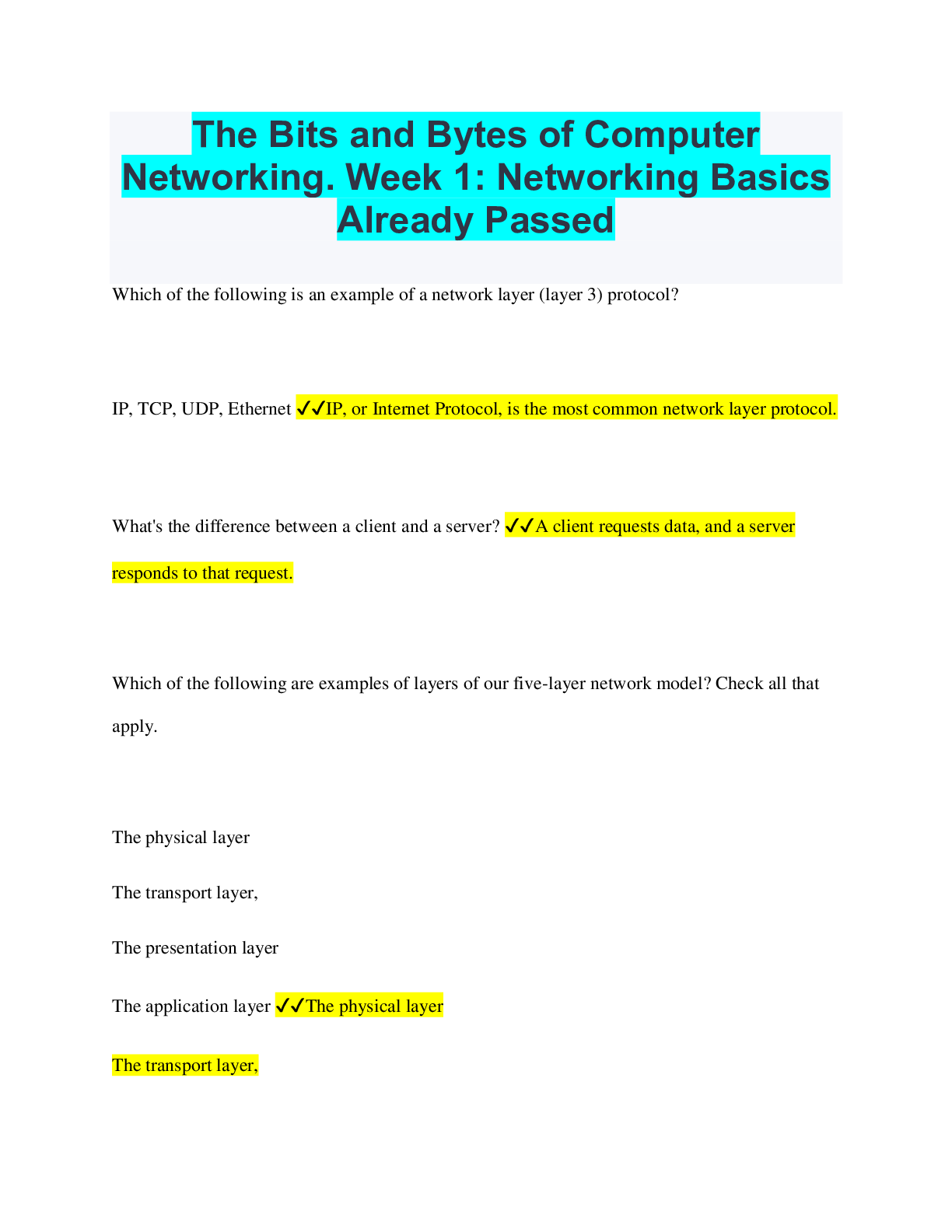
 Answered 2023.png)


